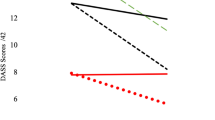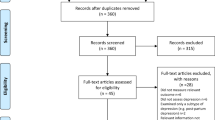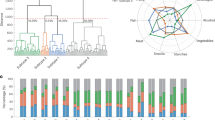Abstract
A deficient dopamine D2 receptor (DA2) formation or action may contribute to hypertension via an increase of catecholamine release. In addition, Axis II personality disorders that appears odd or eccentric (cluster A) is associated with a low density of DA2. This study sought to examine if a NcoI restriction fragment length polymorphism (C to T transition) in exon 6 of the dopamine D2 receptor gene (DRD2) was associated with these characteristics. The genotypes (CC, CT and TT) were compared in anthropometric, endocrine, metabolic and haemodynamic variables as well as estimates of personality disorders in 284 randomly selected 51-year-old men. Homozygotes for the C allele constituted 49% of the men and homozygotes for the T allele 9%, while heterozygotes were 41%. The TT genotype was associated with elevated systolic and diastolic blood pressure, independent of obesity and endocrine abnormalities, including the hypothalamic-pituitary-adrenal axis regulation. Moreover, the TT genotype was significantly more frequent among subjects with grade 1 (mild) hypertension (>140/90 mm Hg) compared to normotensive subjects (<130/85 mm Hg). The polymorphism in exon 6 of the DRD2 was also significantly associated with cluster A personality disorders. These results suggest that a polymorphism in exon 6 of the DRD2examined with the restriction enzyme NcoI is associated with an elevated blood pressure, independent of obesity. Paranoid or schizoid personality disorders is also associated with a polymorphism of the DRD2, which might be associated with a previously demonstrated low density of this receptor.
This is a preview of subscription content, access via your institution
Access options
Subscribe to this journal
Receive 12 digital issues and online access to articles
$119.00 per year
only $9.92 per issue
Buy this article
- Purchase on Springer Link
- Instant access to full article PDF
Prices may be subject to local taxes which are calculated during checkout
Similar content being viewed by others
References
Missale C et alDopamine receptors: from structure to function Physiol Rev 1998 78 189–225
Kuchel O The heterogeneity of dopamine involvement in essential hypertension Clin Exp Hypertens [A] 1989 11 (Suppl 1) 217–225
Folkow B Physiological aspects of primary hypertension Physiol Rev 1982 62 347–504
van den Buuse M, Versteeg DH, de Jong W Role of dopamine in the development of spontaneous hypertension Hypertension 1984 6 899–905
Linthorst AC, De Lang H, De Jong W, Versteeg DH Effect of the dopamine D2 receptor agonist quinpirole on the in vivo release of dopamine in the caudate nucleus of hypertensive rats Eur J Pharmacol 1991 201 125–133
Jackson DM, Westlind-Danielsson A Dopamine receptors: molecular biology, biochemistry and behavioural aspects Pharmacol Ther 1994 64 291–370
Sigmundson HK Pharmacotherapy of schizophrenia: a review Can J Psychiatry 1994 39 (Suppl 2) S70–S75
Meador-Woodruff JH Update on dopamine receptors Ann Clin Psychiatry 1994 6 79–90
Farde L, Gustavsson JP, Jonsson E D2 dopamine receptors and personality traits (letter) Nature 1997 385 590
Langston JW, Koller WC, Giron LT Etiology of Parkinson’s disease. In: Olanow CW, Lieberman AN (eds) The Scientific Basis for the Treatment of Parkinson’s Disease Parthenon Publishing Group: Lancs 1992 33–58
Noble EP et alD2 dopamine receptor gene and obesity Int J Eat Disord 1994 15 205–217
Comings DE et alThe dopamine D2 receptor (DRD2) as a major gene in obesity and height Biochem Med Metab Biol 1993 50 176–185
Hoebel BG Brain neurotransmitters in food and drug reward Am J Clin Nutr 1985 42 1133–1150
Ekselius L et alSCID II interviews and the SCID Screen questionnaire as diagnostic tools for personality disorders in DSM-III-R Acta Psychiatr Scand 1994 90 120–123
Rosmond R Eriksson E. Björntorp P. Personality disorders in relation to anthropometric, endocrine and metabolic factors J Endocrinol Invest 1999 22 279–288
Rosmond R, Dallman MF, Björntorp P Stress-related cortisol secretion in men: relationships with abdominal obesity and endocrine, metabolic and hemodynamic abnormalities J Clin Endocrinol Metab 1998 83 1853–1859
American Psychiatric Association Diagnostic and Statistical Manual of Mental Disorders APA: Washington, DC 1994
Breier A et alDopamine D2 receptor density and personal detachment in healthy subjects Am J Psychiatry 1998 155 1440–1442
Kestler LP et alThe relation between dopamine D2 receptor density and personality: preliminary evidence from the NEO personality inventory-revised Neuropsychiatry Neuropsychol Behav Neurol 2000 13 48–52
Rosmond R, Lapidus L, Björntorp P The influence of occupational and social factors on obesity and body fat distribution in middle-aged men Int J Obes Relat Metab Disord 1996 20 599–607
Rosmond R, Lapidus L, Mårin P, Björntorp P Mental distress, obesity and body fat distribution in middle-aged men Obes Res 1996 4 245–252
Rosmond R, Lapidus L, Björntorp P A comparative review of psychosocial and occupational environment in native Swedes and immigrants Scand J Soc Med 1996 24 237–242
Sjöstrom L et alThe sagittal diameter is a valid marker of the visceral adipose tissue volume. In: Angel A et al (eds) Progress in Obesity Research: 7 John Libbey & Co: London 1996 309–319
Römer M et alEuropean Multicentre Evaluation of the ESAT 6660 J Clin Chem Clin Biochem 1990 28 435–443
Wiklund O et alAlphalipoprotein cholesterol levels in relation to acute myocardial infarction and its risk factors Scand J Clin Lab Invest 1980 40 239–247
Sarkar G et alDirect sequencing of the dopamine D2 receptor (DRD2) in schizophrenics reveals three polymorphisms but no structural change in the receptor Genomics 1991 11 8–14
Spjotvoll E, Stoline M An extension of the T-method of multiple comparison to include the cases with unequal sample sizes J Am Stat Assoc 1973 68 976–978
World Health Organization International Society of Hypertension Guidelines for the management of hypertension. Guidelines Subcommittee J Hypertens 1999 17 151–183
Serrano PA, Figueroa G, Torres MZ, Del Angel AR Adrenaline, noradrenaline and dopamine excretion inpatients with essential hypertension Am J Cardiol 1964 13 484–488
Missale C et alIdentification and characterization of postsynaptic D1- and D2-dopamine receptors in the cardiovascular system J Cardiovasc Pharmacol 1988 11 643–650
Foucart S et alModulation of adrenal catecholamine release by DA2 dopamine receptors in the anaesthetized dog Clin Exp Pharmacol Physiol 1988 15 601–611
Amenta F et alPharmacological characterization and autoradiographic localization of dopamine receptors in the human adrenal cortex Eur J Endocrinol 1994 131 91–96
Mannelli M et alEffects of different dopaminergic antagonists on bromocriptine-induced inhibition of norepinephrine release J Clin Endocrinol Metab 1984 59 74–78
Mannelli M et alEndogenous dopamine (DA) and DA2 receptors: a mechanism limiting excessive sympathetic-adrenal discharge in humans J Clin Endocrinol Metab 1988 66 626–631
Rosmond R et alA glucocorticoid receptor gene marker is associated with abdominal obesity, leptin, and dysregulation of the hypothalamic-pituitary-adrenal axis Obes Res 2000 8 211–218
Acknowledgements
The study was supported by grants from the Swedish Medical Research Council (K97–19X–00251–35A) and the Medical Research Council of Canada (MT-13960). The first author would also like to acknowledge the Henning and Johan Throne-Holst Foundation for the support of a postdoctoral fellowship at the Pennington Biomedical Research Center.
Author information
Authors and Affiliations
Rights and permissions
About this article
Cite this article
Rosmond, R., Rankinen, T., Chagnon, M. et al. Polymorphism in exon 6 of the dopamine D2 receptor gene (DRD2) is associated with elevated blood pressure and personality disorders in men. J Hum Hypertens 15, 553–558 (2001). https://doi.org/10.1038/sj.jhh.1001231
Received:
Revised:
Accepted:
Published:
Issue Date:
DOI: https://doi.org/10.1038/sj.jhh.1001231
Keywords
This article is cited by
-
Genetic polymorphisms associated with reactive oxygen species and blood pressure regulation
The Pharmacogenomics Journal (2019)
-
Dopamine D2 receptor gene polymorphisms and response to cabergoline therapy in patients with prolactin-secreting pituitary adenomas
The Pharmacogenomics Journal (2008)
-
Molecular genetics of personality
Current Psychiatry Reports (2005)



